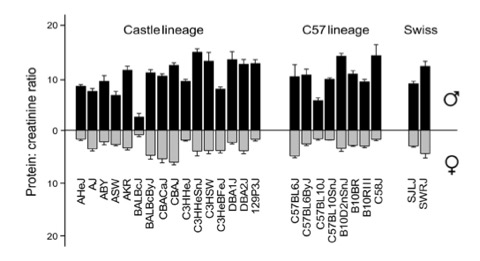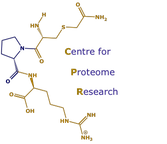MUP variation in lab mouse strains

Cheetham SA, Smith AL, Armstrong SD, Beynon RJ, Hurst JL. (2009) Limited variation in the major urinary proteins of laboratory mice. Physiol Behav. 96, 253-261 [PUBMED][PDF]
Individual variation in a specialised set of scent communication proteins, the major urinary proteins (MUPs), provides a genetic identity signature that underlies individual and kin recognition, and the assessment of heterozygosity in wild house mice. Here we examine the extent to which MUP variation is retained among 30 classical strains of laboratory mice from three main lineages (Castle, C57, Swiss). Normal wild-type variation in urinary MUP pattern appears to have been lost at an early stage in the derivation of the classical laboratory strains. All strains from the Castle and Swiss lineages shared the same "individual" MUP pattern, consistent with common ancestry from very few founders, while those from the C57 lineage shared a different pattern. Notably, individual variation in MUP pattern was no greater within the Swiss outbred ICR (CD-1) strain than typical for inbred strains. Total urinary protein concentration varied considerably between even closely related substrains, together with minor variation in the relative amount of each MUP isoform expressed, although the functional significance of such quantitative variation in MUP expression has yet to be established. Expression was 2-8 fold higher among males, while a MUP expressed by most male but not female wild mice was expressed by C57 males but variably among Castle and Swiss males and occasionally by females in some strains. The lack of normal variation in MUP patterns within and between strains has important implications for the use of laboratory mice in behavioural or neurophysiological research investigating social recognition or mate choice.
